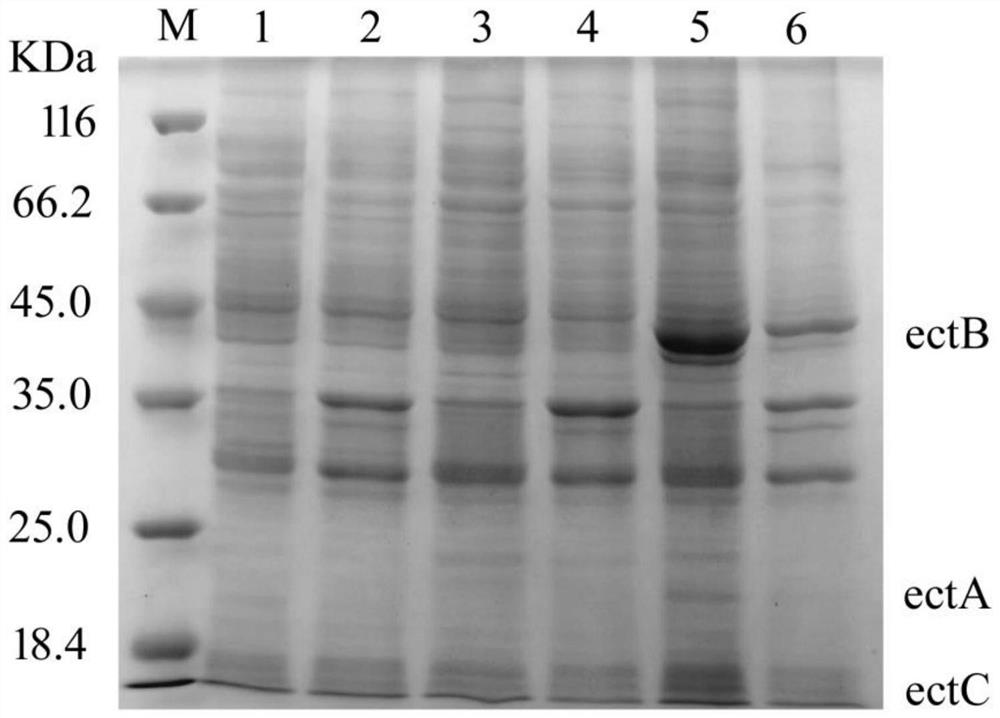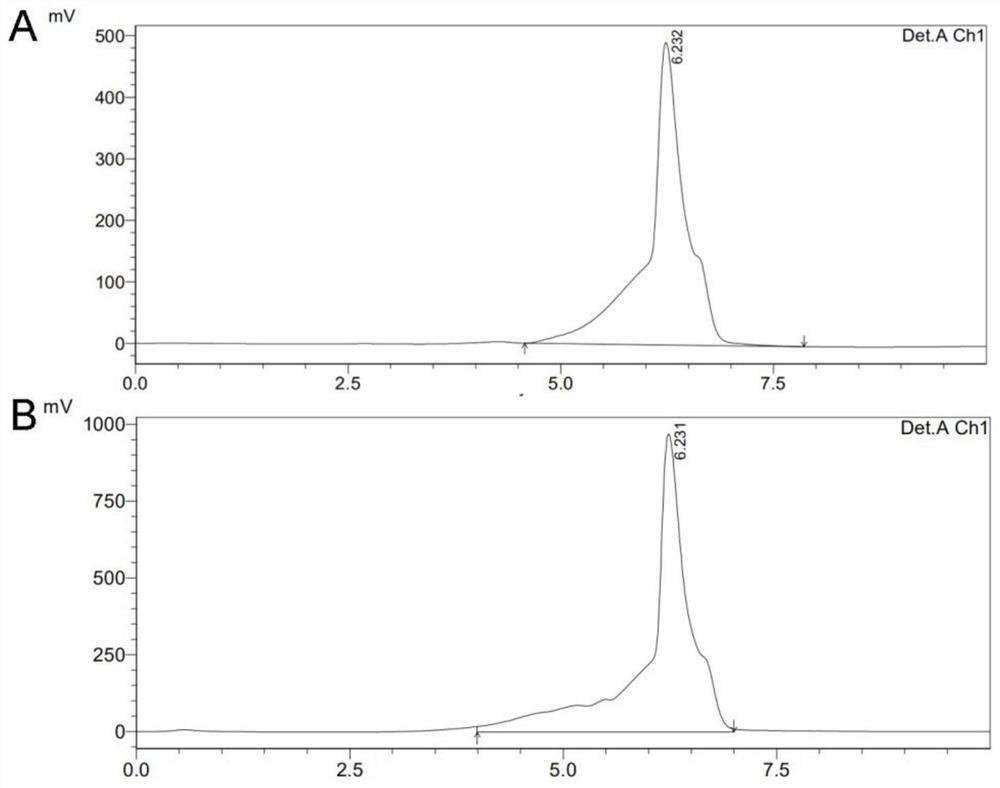Construction method of engineering strain for producing tetrahydropyrimidine by biological method
A technology of ectoine and engineering strains, which is applied in the production and application of the strains, and in the field of construction of engineering strains for the production of ectoine, can solve the problems of restricting the industrial production of ectoine and its application in a wide range of fields, increasing the production cost of heating and cooling processes, Reduce the stability of enzymatic reactions and other issues, and achieve the effects of saving industrial energy consumption, large industrialization potential, and simple purification
- Summary
- Abstract
- Description
- Claims
- Application Information
AI Technical Summary
Problems solved by technology
Method used
Image
Examples
Embodiment 1
[0042] Embodiment 1: Construction and identification of recombinant strains
[0043] 1. Construction of strains containing recombinant plasmid pET-ECT
[0044] 1) Plasmid construction
[0045] Plasmid pET24 is 4.97kb in size, contains kanamycin resistance gene, lactose repressor lac I gene, tac promoter, and multiple restriction endonuclease sites.
[0046] Commercially synthesized DNA fragment from the ectoine synthesis gene cluster of Salinicola salaria, the nucleotide sequence of which is shown in SEQUENCE LISTING NO: 1 in the sequence listing.
[0047] The synthetic ectoine synthetic gene cluster DNA fragment was double-digested with EcoR I and Nde I, and the vector pET24 was double-digested with EcoR I and Nde I. Enzyme digestion system: DNA 43 μL, Buffer R 5 μL, Nde I 1 μL, EcoR I 1 μL, incubate at 37°C for 3 hours.
[0048] The enzyme-digested DNA fragments were gel recovered, and T4 ligase was used to connect the ectoine synthetic gene cluster and the pET24 vector D...
Embodiment 2
[0054] Embodiment 2: the fermentation of recombinant bacterial strain
[0055] 100mL of seed solution is prepared, and the seed solution contains 1% peptone, 0.5% yeast extract, 1% sodium chloride, and the balance is purified water. After being sterilized in a 250mL Erlenmeyer flask, inoculate a single colony on the plate medium, and the shaker rotation speed is 200rpm. After culturing at 37°C for 16 hours, inoculate into a 500mL Erlenmeyer flask containing 100mL of fermentation broth, which contains 1.2% peptone, 2.4% yeast extract, 0.4% glycerin, 0.23% potassium dihydrogen phosphate, 1.25% dipotassium hydrogen phosphate, The balance is purified water. Fermentation culture conditions: inoculate according to 1% of the fermentation volume, cultivate at 37°C, and the rotation speed of the shaker is 200rpm. After 2 hours after inoculation, cool down to 25-28°C, add final concentration of 0.2mM IPTG, and cultivate for 12 hours. After the fermentation culture is over, take 1mL of...
Embodiment 3
[0056] Embodiment 3: Catalyzing sodium aspartate to generate ectoine
[0057]After the fermentation culture is over, collect the cells by centrifugation at 4000rpm at 4°C, suspend the cells with 20mL pH 6.5 phosphate buffer, and transfer them into a 100mL Erlenmeyer flask with 200mM sodium aspartate, 100mM glucose, and 50mM potassium chloride. The conditions were reaction at 20° C., and the rotation speed of the shaker was 180 rpm. After 24 hours, the yield of ectoine was detected by high performance liquid chromatography (HPLC) to be 2.15 g / L.
PUM
 Login to View More
Login to View More Abstract
Description
Claims
Application Information
 Login to View More
Login to View More - R&D
- Intellectual Property
- Life Sciences
- Materials
- Tech Scout
- Unparalleled Data Quality
- Higher Quality Content
- 60% Fewer Hallucinations
Browse by: Latest US Patents, China's latest patents, Technical Efficacy Thesaurus, Application Domain, Technology Topic, Popular Technical Reports.
© 2025 PatSnap. All rights reserved.Legal|Privacy policy|Modern Slavery Act Transparency Statement|Sitemap|About US| Contact US: help@patsnap.com



